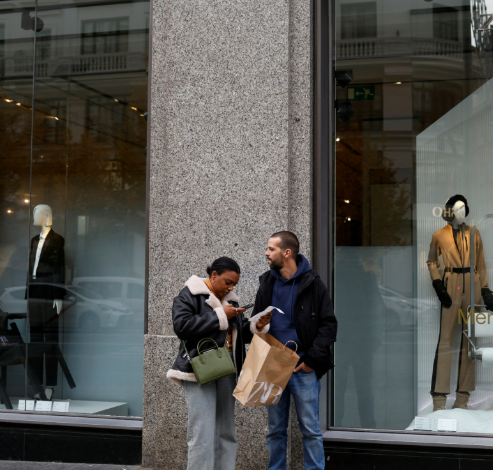Zara Takes a Step Toward Sustainability with the Launch of Second-Hand Clothing Platform in the U.S.

Zara, a globally recognized name in fast fashion, is taking a significant step towards more sustainable practices by launching its second-hand clothing platform in the U.S. next month. As the environmental and social impacts of fast fashion come under increasing scrutiny, this move represents a shift for the brand, signaling a commitment to more responsible consumption. Zara’s new initiative is set to change the way we view fast fashion and could play a crucial role in promoting a circular economy.
The Environmental Impact of Fast Fashion
The fast fashion industry has long been criticized for its detrimental effects on the environment. With its emphasis on producing high volumes of cheap clothing to keep up with rapidly changing trends, the industry has contributed to excessive carbon emissions, massive water consumption, and overflowing landfills. Many garments are worn only a few times before being discarded, leading to an ever-growing waste crisis.
In response, consumers have become more aware of the environmental impact of their purchasing habits. There is a growing demand for transparency from fashion brands, and many people are now gravitating towards sustainable alternatives such as second-hand clothing, clothing swaps, and investing in long-lasting pieces. Zara’s decision to introduce a second-hand platform is a direct response to this shift in consumer behavior, and it signals a broader movement toward more sustainable fashion practices.
Zara’s Second-Hand Platform: How It Works
Zara’s “Pre-Owned” platform, which allows customers to buy and sell second-hand Zara clothing, has been available in 16 European countries since 2022. Next month, the U.S. will be the latest market to benefit from this innovative service, and it’s expected to expand to other countries, including Canada, soon after. The platform offers three main services: resale, repair, and donation.
- Resale: Customers can list their pre-loved Zara items for sale on the platform. The process is designed to be simple, allowing users to upload photos and descriptions of their garments to make transactions as seamless as possible. This feature helps keep Zara items in circulation for longer, reducing the need for continuous new production.
- Repair: Another key feature of the platform is the option to repair damaged garments. Zara will offer repair services such as fixing zippers, mending seams, or replacing buttons. By making repairs more accessible, Zara encourages consumers to extend the life of their clothing, reducing the need for replacements.
- Donation: Customers can also donate their used clothing to charitable organizations. This promotes social responsibility while simultaneously helping reduce textile waste by ensuring clothes aren’t sent to landfills.
A Step Toward a Circular Economy
Zara’s second-hand platform is a step towards a circular economy, a system where products are reused, repaired, and recycled instead of discarded. In a traditional linear economy, products are made, used, and then thrown away. A circular economy, on the other hand, strives to keep resources in use for as long as possible, minimizing waste and reducing environmental impact.
By facilitating the resale and repair of garments, Zara is contributing to this circular model. Reselling clothes reduces demand for new products, which in turn lessens the need for resources and energy for production. Repairing clothing ensures longer life spans for garments, decreasing the likelihood of them being thrown away.
While Zara’s initiative is promising, it’s important to note that it doesn’t solve all of the challenges posed by fast fashion. The company’s core business model still relies on producing new clothing at a rapid pace. Nevertheless, the move to incorporate second-hand clothing into its business shows a commitment to positive change and reflects a larger trend in the fashion industry towards more sustainable practices.
Changing Consumer Mindset and the Future of Fashion
Zara’s launch of its second-hand clothing platform marks a pivotal moment in the fashion industry. It reflects changing consumer attitudes, with more people now aware of the environmental impact of their purchases and looking for ways to make more sustainable choices. The growing popularity of second-hand shopping is a testament to this shift, and Zara’s influence as a major fast-fashion retailer could inspire other brands to follow suit.
While there’s still much progress to be made in achieving true sustainability in fashion, Zara’s new initiative is a positive step. As the platform grows, it could play a crucial role in reshaping how we approach fashion, consumption, and sustainability worldwide.





